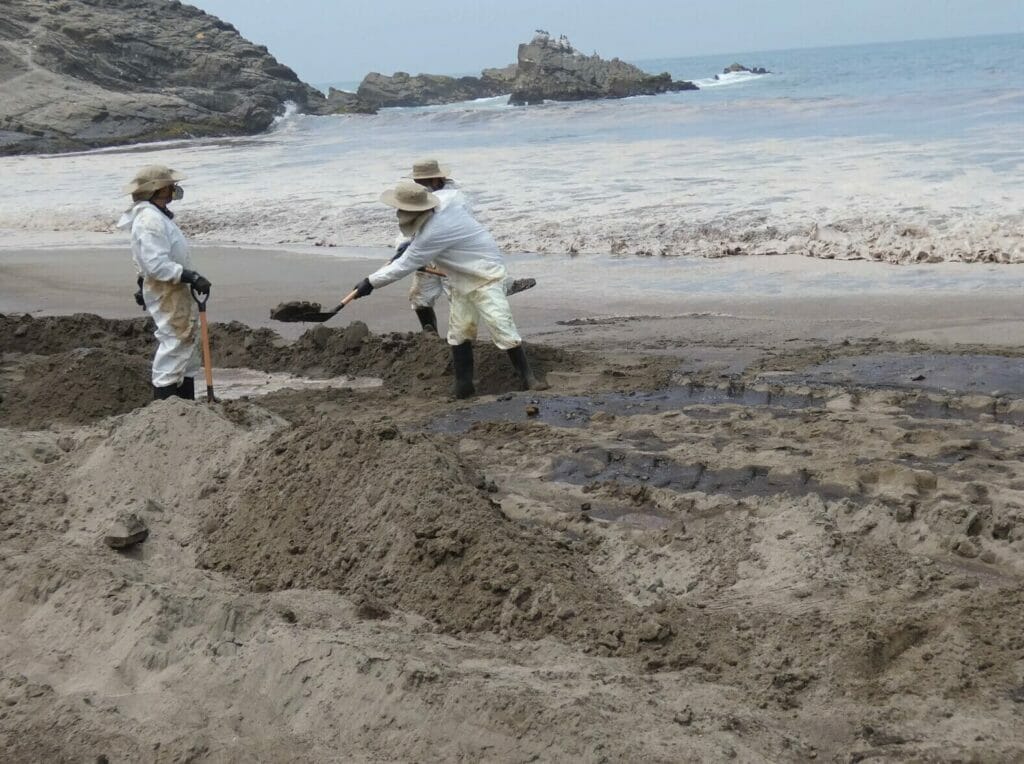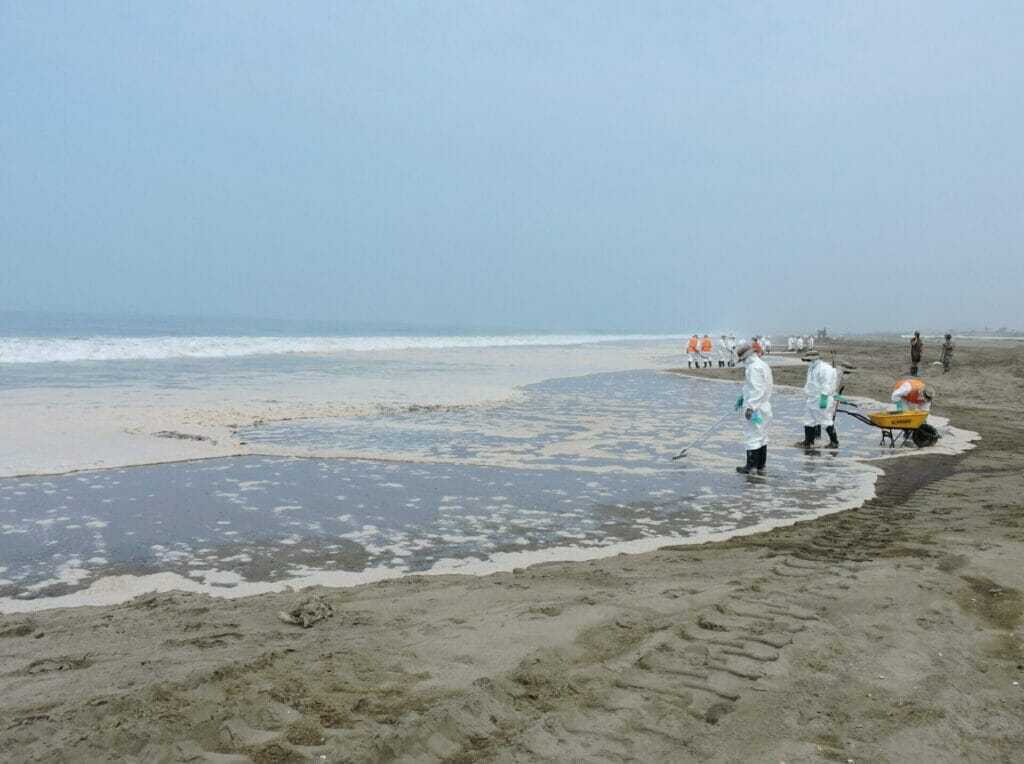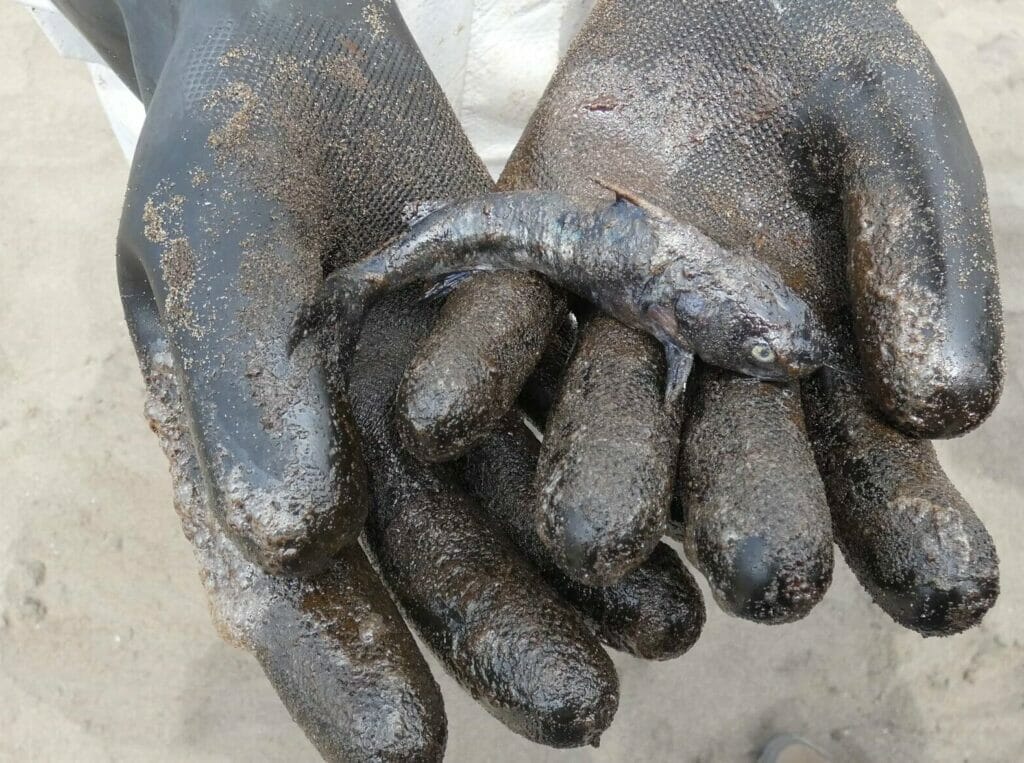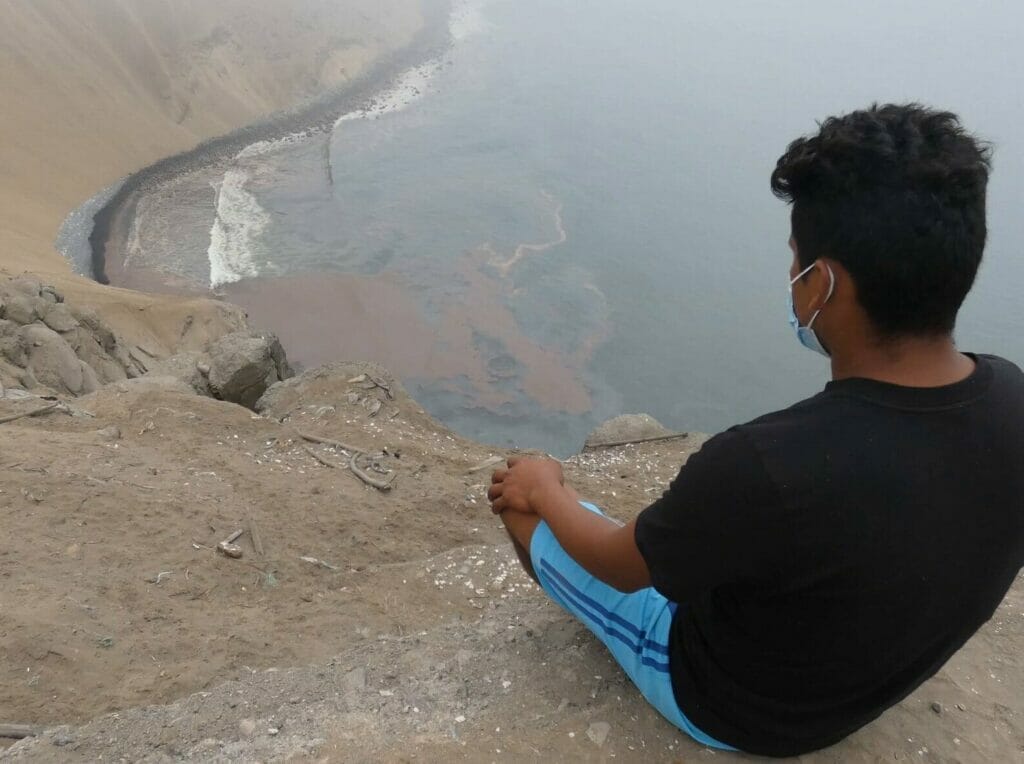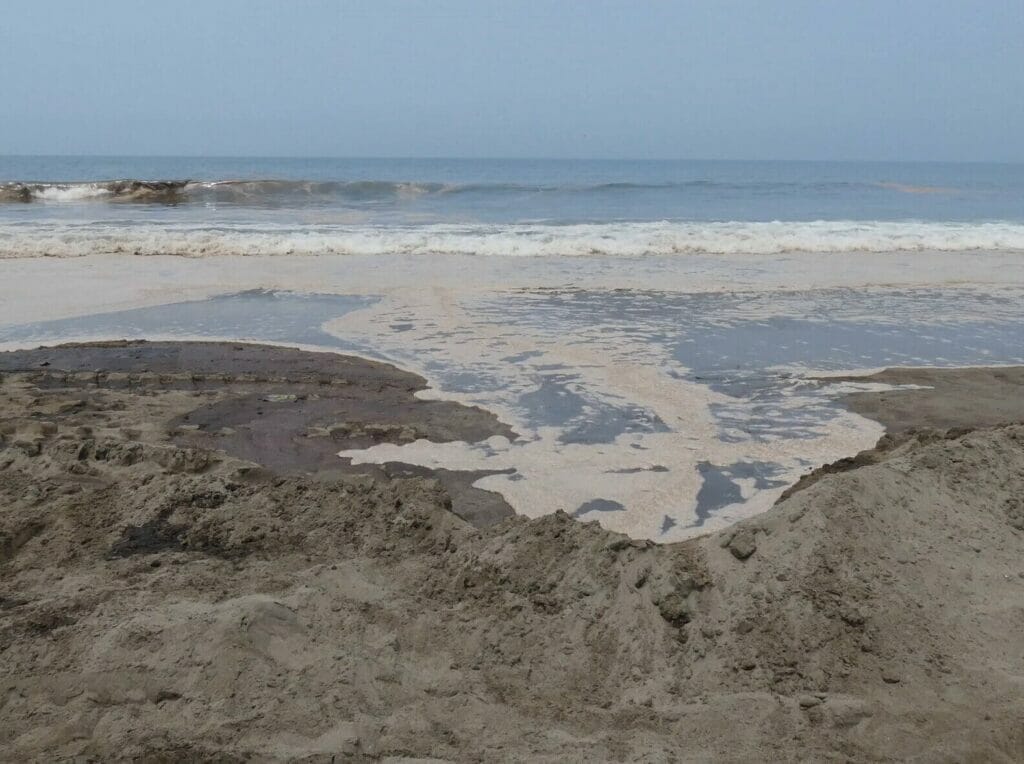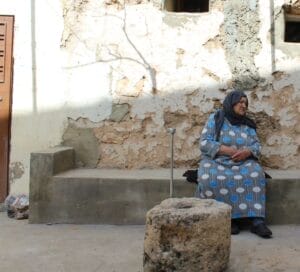
From a black swell that rushed the Hamburg sea and the skill of the imagination, the tender novel of an orphaned seagull and the cat that taught it to fly was born. Unfortunately, what has happened in Peru is far from resembling Sepulveda's magic. In fact, the scenario that is presented today, two months after the accident, only reminds us of a horror story: it is an unprecedented ecocide in the country.
The spill occurred on January 15, 2022, at the La Pampilla refinery, belonging to the Spanish company Repsol, north of Callao, some 30 km from Lima.
Photos by https://cooperaccion.org.pe/
According to the first communications from Repsol, the volume of crude oil spilled corresponded to 0.16 barrels. Later, when the damage was evidenced by the sea, the company raised the number to 6,000. However, after investigations carried out by the Unidad Conjunta de Emergencias Ambientales (Joint Environmental Emergencies Unit), it was discovered that 11900 barrels were spilled into the Pacific, releasing 2100 tons of crude oil. The accident has been catalogued as the worst ecological catastrophe in Peru's history.
An environmental and social disaster
The disaster has affected all the species that inhabited the area. According to the Servicio Nacional Forestal y de Fauna Silvestre (National Forestry and Wildlife Service), which on March 15 initiated an administrative process against the company, the spill has caused the death of 491 specimens of wildlife. In addition, an undefined number of fish, birds, otters, sea lions, and other specimens have been forced to leave their natural habitat. The black spot has expanded, following the currents, to cover 713 hectares of sea. The coastline has also been taken by the spill: 180 hectares of sand have been poisoned by the oil.
Another victim of the spill has been the local economy. In fact, fishermen in the area have lost their main source of income, as they no longer have anywhere to fish. Other activities have also been affected by the consequences of the spill: hotels and facilities in the area are closed and the lodgings are empty, as tourism has been completely destroyed. To address the economic losses, the State, after a bilateral dialogue with Repsol, which did not include those directly affected at the discussion table, has agreed that the company will provide up to 3,000 Peruvian soles to those affected, depending on their economic activities, to support the families. However, this would be a derisory compensation. The amount does not reflect the medium and long-term economic losses, as it is estimated that the spill will continue to damage marine welfare for at least the next six years. Even the value of the fish has been damaged. According to the fishermen, the spill will affect prices in the long term, since common sense will be installed in the idea that the fish are harmful and unfit for consumption. In addition, harassment has begun to emerge in the coastal zone, in a country that is severely affected by violence and social conflicts in the highlands and jungle areas. In fact, as a consequence of the spill, some fishermen have moved to other areas to maintain their activities, which has led to territorial disputes.
The current scenario two months after the disaster is not reassuring
According to the president of Repsol Peru, the response to the accident was not timely, as it seems that at first the company was not aware of the extent of the damage. Once the magnitude of the accident was understood, the company promised to clean up the affected areas, assuring to finish the work before the end of February. However, within days, the company had already been accused of failing to identify the affected areas within the agreed timeframe. To date, a detailed inventory of damage to people, flora and the environment that accurately quantifies the damage suffered and to come is still lacking. Moreover, the cleanup is not yet complete. Although the company claims that 94% of the affected areas are clean, the reality seems to be different. In fact, the recent action of the Organismo de Evaluación y Fiscalización Ambiental (Environmental Evaluation and Control Agency), which on March 20 instructed a new procedure to sanction the La Pampilla Refinery, seems to confirm everyone's concerns: the company is not complying with its promises.
Although the Peruvian government has been active, imposing sanctions and initiating new administrative procedures, the main problem, environmental recovery, remains unresolved. It should also be noted that, to date, there is no state plan for the economic recovery of the natural persons who have lost their sources of income after the spill. The only certainty is that until now, the beaches, the ocean and the Peruvian people remain at the mercy of this hopscotch of sanctions and unfulfilled promises, stuck in the thousands of bureaucratic red tape and the absence of rights to effectively and harshly sanction the companies and protect the environment and its inhabitants.


